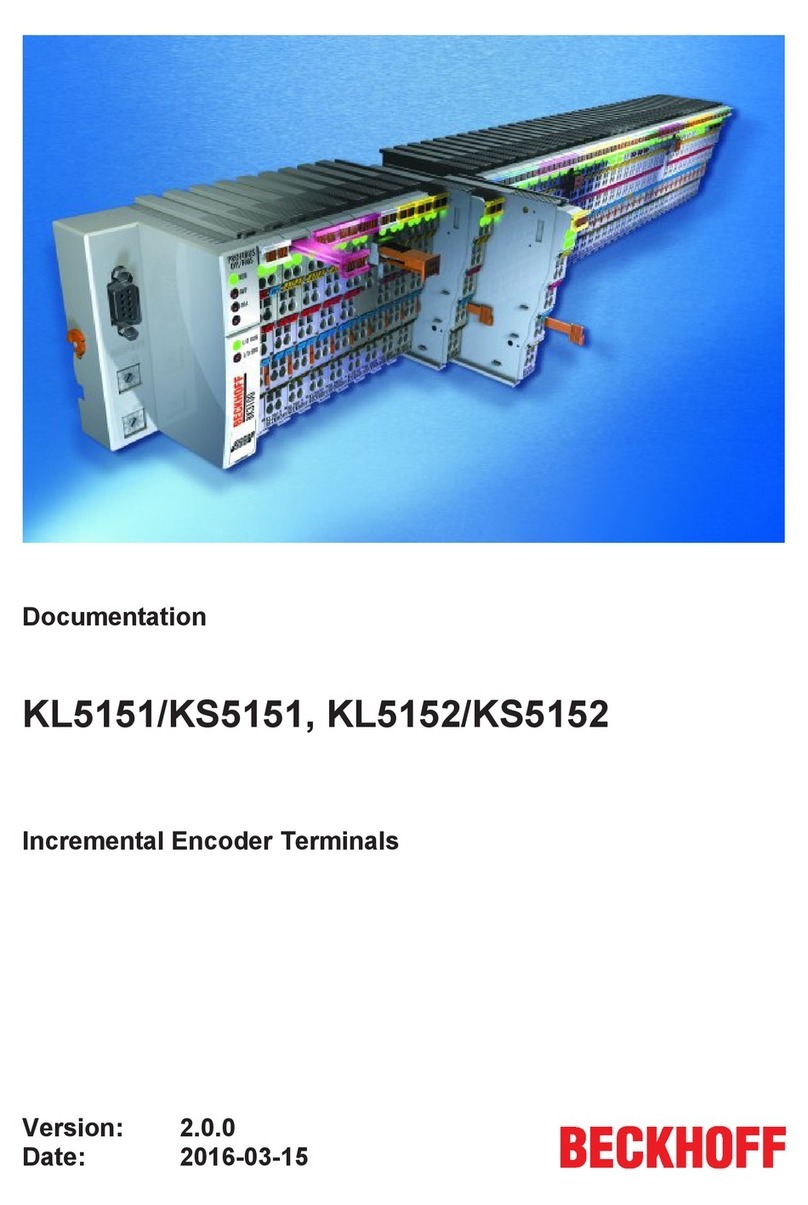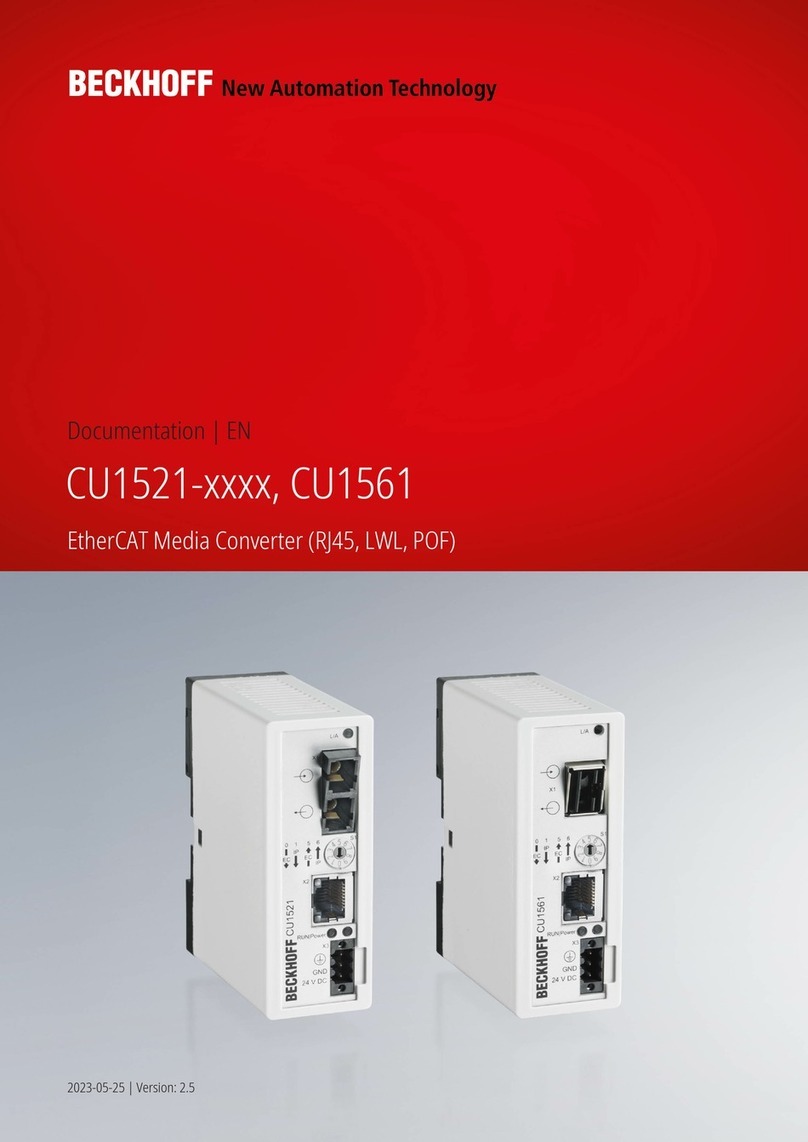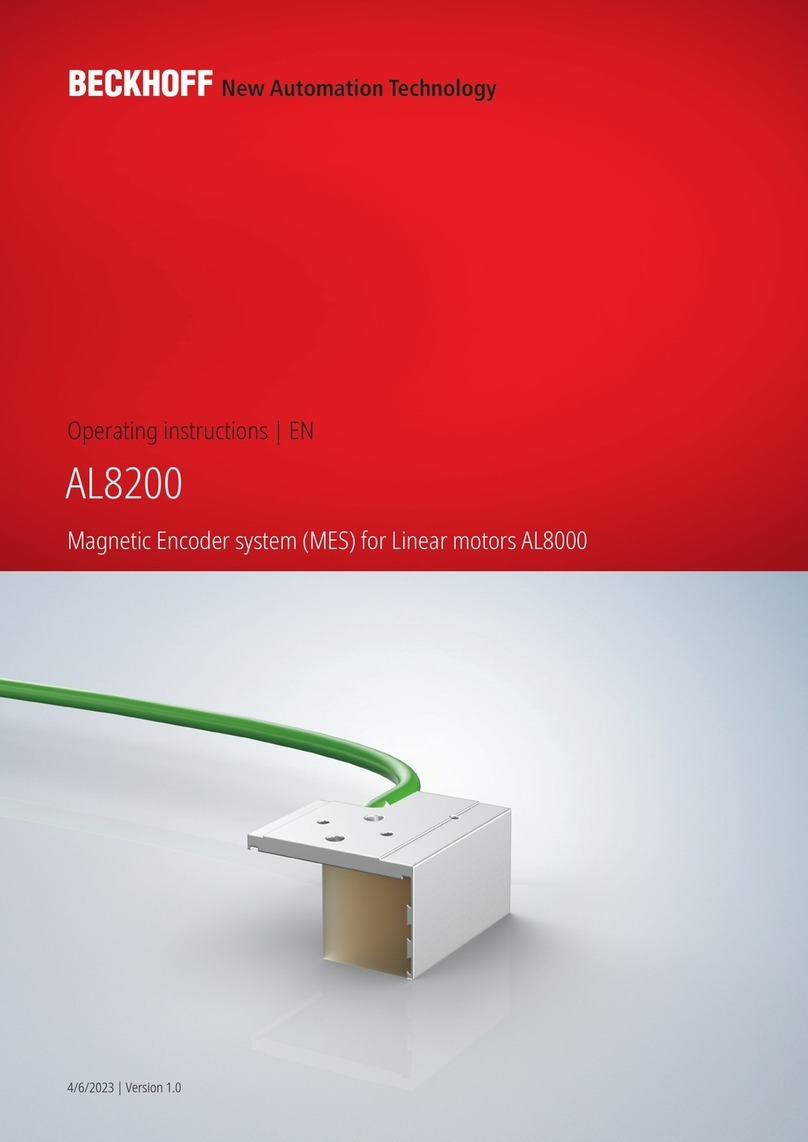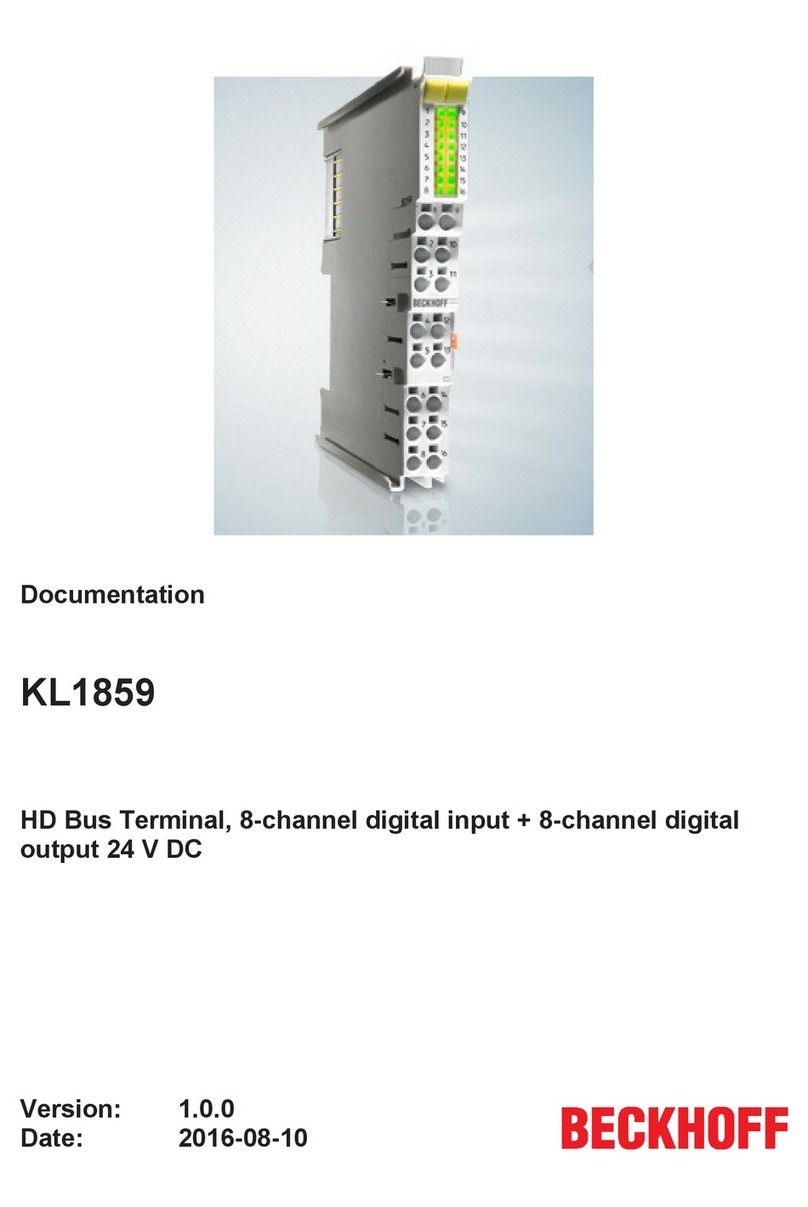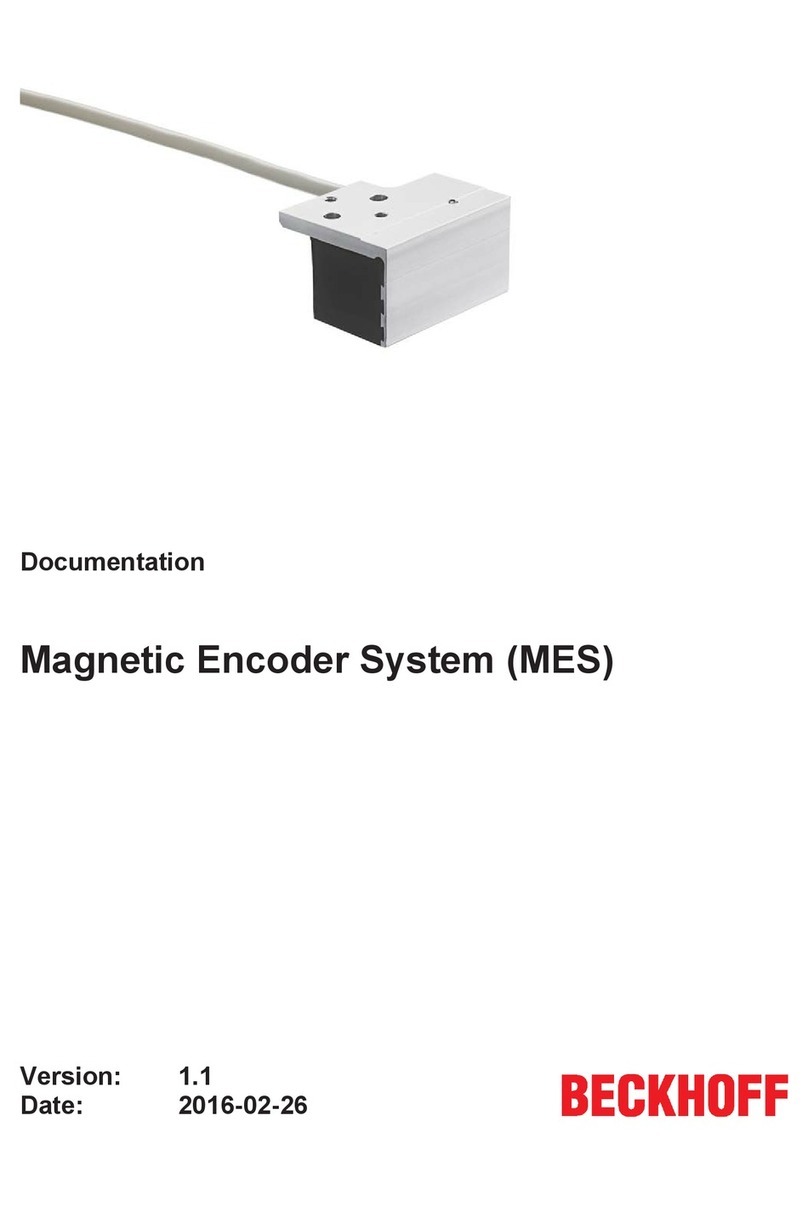
Table of contents
EP9521-0020 3Version: 1.2
Table of contents
1 Foreword ....................................................................................................................................................5
1.1 Notes on the documentation..............................................................................................................5
1.2 Safety instructions .............................................................................................................................6
1.3 Documentation issue status ..............................................................................................................7
2 EtherCAT Box - Introduction ....................................................................................................................8
3 Product overview.....................................................................................................................................10
3.1 Introduction......................................................................................................................................10
3.2 Technical Data.................................................................................................................................11
3.2.1 Additional checks............................................................................................................. 11
3.3 Scope of supply ...............................................................................................................................11
4 Mounting and connection.......................................................................................................................13
4.1 Mounting..........................................................................................................................................13
4.1.1 Dimensions ...................................................................................................................... 13
4.1.2 Fixing ............................................................................................................................... 14
4.1.3 Functional earth (FE) ....................................................................................................... 14
4.1.4 Tightening torques for plug connectors ........................................................................... 14
4.2 Connection ......................................................................................................................................15
4.2.1 EtherCAT ......................................................................................................................... 15
4.2.2 Optical fiber cables .......................................................................................................... 17
4.2.3 Supply voltages ............................................................................................................... 20
4.3 UL Requirements.............................................................................................................................22
5 Commissioning/Configuration ...............................................................................................................23
5.1 Integration in TwinCAT ....................................................................................................................23
5.2 Application notes .............................................................................................................................24
5.3 Restoring the delivery state .............................................................................................................28
5.4 Diagnostic LEDs ..............................................................................................................................29
6 Appendix ..................................................................................................................................................30
6.1 General operating conditions...........................................................................................................30
6.2 Accessories .....................................................................................................................................31
6.3 Version identification of EtherCAT devices .....................................................................................32
6.3.1 Beckhoff Identification Code (BIC)................................................................................... 36
6.4 Support and Service ........................................................................................................................38












